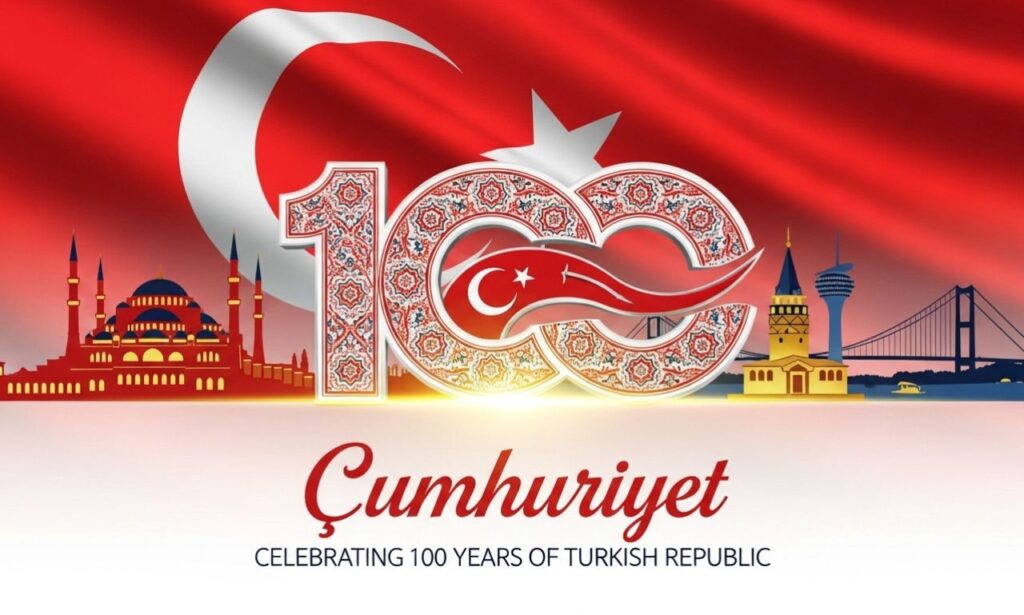As we stand on the brink of a historic milestone, Turkey prepares to celebrate 100 years of its republic—Cumhuritey. This remarkable journey began in 1923 and has since transformed a nation rich in culture, history, and diversity into a modern state with an influential presence on the world stage. The story of Cumhuriyet is not just about political change; it’s woven into the fabric of Turkish identity, shaping its society and cultural landscape. Join us as we explore the significance of this centennial celebration and reflect on how Cumhuriyet has paved the way for progress throughout its first century.
What is Cumhuritey?
Cumhuritey refers to the celebration of the Republic of Turkey, marking a significant chapter in its history. It embodies not just a political system but also a cultural awakening for the nation.
This term encapsulates ideals such as democracy, secularism, and national identity. The essence of Cumhuritey lies in the people’s aspirations for freedom and equality.
It signifies more than governance; it reflects social change and modernization efforts that have transformed Turkey over the past century.
Celebrating Cumhuritey is about recognizing achievements while acknowledging challenges faced along the way. It invites reflection on how far Turkey has come since its establishment in 1923.
As citizens celebrate this milestone, they honor both progress made and future possibilities within their republic’s framework.
The establishment of Cumhuriyet (Republic) and its significance
The establishment of Cumhuritey, or the Republic of Turkey, marked a pivotal moment in history. It emerged from the ashes of the Ottoman Empire in 1923, symbolizing a new beginning for the nation.
This transition wasn’t merely political; it represented a radical shift towards modernization and secularism. The vision was to create a state that embraced contemporary ideas while shedding centuries-old traditions.
Cumhuriyet aimed to empower citizens through education and civic participation. A commitment to equality became central, allowing diverse voices to contribute to national identity.
Its significance extends beyond borders. The Turkish Republic inspired other nations navigating their journeys toward independence and self-determination during an era defined by colonialism.
By fostering unity among its people, Cumhuriyet laid down foundations that continue influencing Turkey’s social dynamics today.
Mustafa Kemal Atatürk: The father of the Turkish Republic
Mustafa Kemal Atatürk is a towering figure in Turkish history. Born in 1881, his vision for Turkey transcended traditional boundaries. He aimed to modernize the nation following the collapse of the Ottoman Empire.
Atatürk championed secularism and reform, believing that education was key to progress. He established new schools and encouraged women’s rights, empowering them with legal reforms and access to education.
His bold moves included adopting a new alphabet, which made literacy more accessible. This transformation reshaped how Turks communicated and engaged with their heritage.
Atatürk’s leadership style was pragmatic yet visionary; he prioritized national unity over religious divisions. His legacy continues to influence Turkey today as citizens reflect on his principles of republicanism and democracy.
As we celebrate cumhuriyet this year, Atatürk’s contributions remind us of the importance of innovation in nation-building.
Key milestones and achievements in the first 100 years of the Turkish Republic
The first century of the Turkish Republic is marked by remarkable milestones that shaped its identity.
In 1923, Turkey transitioned from a centuries-old Ottoman Empire to a modern nation-state. This shift was monumental for national sovereignty and unity.
The adoption of the Latin alphabet in 1928 revolutionized literacy rates, allowing education to flourish. This change made reading and writing accessible to millions.
Women gained significant rights under Mustafa Kemal Atatürk’s reforms. The right to vote in 1934 represented a groundbreaking move towards gender equality.
Turkey also embraced industrialization throughout the decades. Infrastructure projects transformed cities and spurred economic growth.
Cultural advancements were equally important. A vibrant art scene emerged, reflecting both traditional influences and contemporary trends.
These achievements contributed profoundly to shaping modern Turkey’s ethos and its place on the global stage.
The modernization and development of Turkey under Cumhuriyet
The establishment of Cumhuriyet marked a turning point for Turkey. The new republic embraced modernity, transforming the nation in unprecedented ways.
Education became accessible to all. Schools sprung up across urban and rural areas alike. Literacy rates soared as reforms took root.
Infrastructure underwent significant upgrades. Roads, railways, and bridges connected distant regions, promoting commerce and unity among the populace.
Culturally, art and literature flourished under republican ideals. Turkish writers and artists found their voices, inspired by both national heritage and global movements.
Women gained rights that reshaped society’s dynamics. Their participation in politics and professions began to challenge traditional roles.
Economic policies focused on industrialization helped diversify Turkey’s economy beyond agriculture. Manufacturing grew rapidly during this era of progress.
All these changes fostered a sense of identity that defined modern Turkey—a nation poised at the crossroads between tradition and contemporary aspirations.
Reflections on the impact of Cumhuriyet on Turkish culture, society, and politics
Cumhuriyet has profoundly reshaped Turkish culture, infusing it with a spirit of modernity and progress. This transformation has led to the flourishing of arts, literature, and education in ways previously unimaginable.
The emphasis on secularism opened doors for diverse expressions of identity. Artists began exploring new themes that resonated with both tradition and contemporary life.
Socially, Cumhuriyet championed gender equality. Women gained rights that allowed them to participate actively in all aspects of society—from politics to the workforce—bringing about a significant shift in roles.
Politically, it laid the groundwork for a democratic framework where citizens had more voice than ever before. The principles established during this era still guide discussions on governance today.
Each aspect reflects an ongoing journey toward self-definition and cultural richness unique to Turkey’s narrative within the global landscape.
Conclusion
As we commemorate the centennial of Cumhuriyet, it’s vital to reflect on its profound impact on Turkey. The establishment of the Republic marked a turning point in history, shifting from an empire to a modern nation-state. Under Mustafa Kemal Atatürk’s visionary leadership, Turkey embraced secularism and reform, paving the way for advancements in education, women’s rights, and industry.
The achievements over these past hundred years tell a story of resilience and progress. From significant infrastructure projects to cultural transformations, Cumhuriyet has shaped Turkish identity in remarkable ways. Today’s society is deeply influenced by this legacy as citizens continue to navigate their path while honoring their rich heritage.
The journey is far from over. As Turkey moves forward into its next century under Cumhuriyet, there remains excitement about future challenges and opportunities that lie ahead. This celebration isn’t just about reflecting on the past; it’s also about envisioning what can be achieved in the years to come within this vibrant republic.






